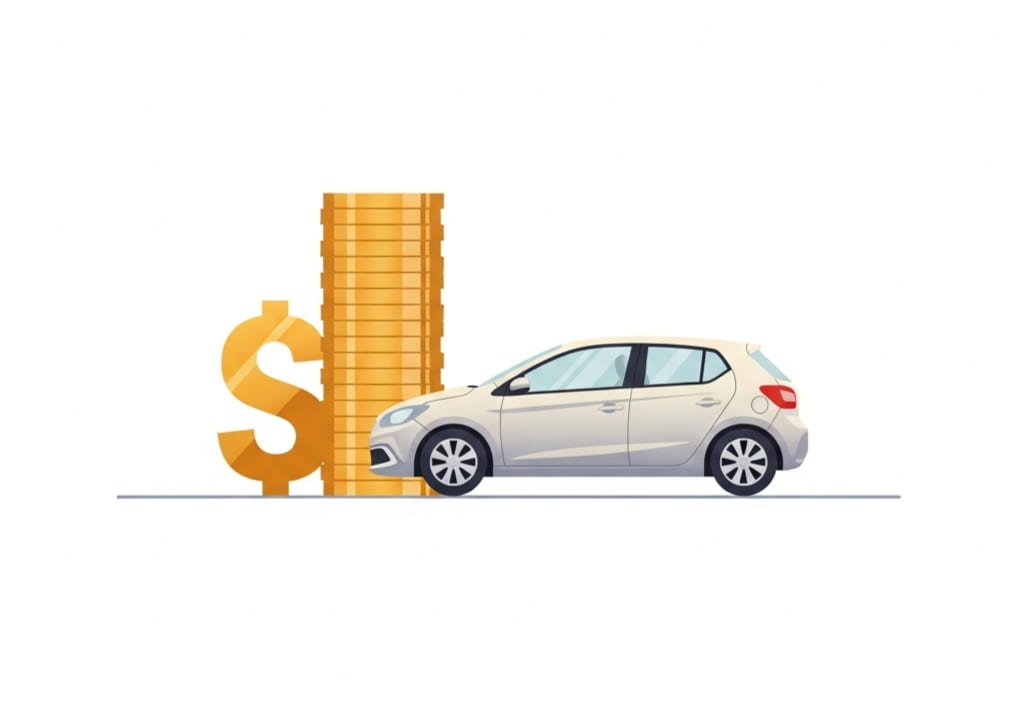What is a Flex Loan
Flex loans are a type of revolving line of credit that works like a cross between a personal loan and a credit card. You receive an approved limit similar to a credit card, but instead of using it for purchases, you withdraw the cash you need. Unlike payday loans that require a lump-sum repayment on your next paycheck, flex loans give you more control by letting you borrow smaller amounts and repay them over time. You only pay interest on the funds you use, not the entire credit line. This structure makes flex loans appealing to individuals who require short-term cash, face irregular expenses, or desire greater borrowing flexibility.
Instead of borrowing a fixed amount with fixed payments, you can borrow multiple smaller amounts, repay them, and borrow again, as long as you stay within your approved limit. Installment-style repayment schedules make managing the loan easier compared to payday loans, which require full repayment in a short period.
Financial institutions such as Wells Fargo and Citi offer these credit options to existing customers, while online lenders like CashNetUSA and Advance Financial provide direct lending products marketed as “no credit check” or “instant approval.” These online offerings often attract individuals with poor credit, but they typically carry significantly higher interest rates. CashNetUSA’s APR can reach 229–299% in some states, and similar online lenders can exceed 200%. High-APR loans like these should be approached with caution.
How Flex Loans Work
A flex loan gives you a credit limit set by the lender based on your income, credit, and profile. You can withdraw money when needed, either through bank transfer or a linked debit card. You only pay interest on what you borrow, not the full limit. With a $3,000 limit, if you take $500, payments and interest apply only to that amount. Repayments are made in monthly installments. Once repaid, the credit becomes available again, much like a credit card. This makes this borrowing option more flexible than fixed personal loans.
Banks like Wells Fargo and Citi usually reserve these credit options for customers with strong credit. Online lenders are faster and sometimes provide same-day funding, but their APRs can exceed 200%, so caution is needed. Missing payments can result in additional fees, increased costs, and a negative impact on your credit.
Interest Rates on Flex Loans
The cost of this type of loan depends heavily on the lender. Traditional banks may charge flat fees, while credit unions and online lenders typically use APRs. Wells Fargo offers amounts of $250 or $500 with flat fees of $12 and $20. Repayment is split into four equal monthly installments. When converted into APR, this roughly equals 18–20 percent. The advantage is simplicity, since the full cost is known upfront.
Credit unions like MSU Federal Credit Union offer these loans with a fixed APR of 28 percent for amounts between $200 and $1,000, payable over six months. Other credit unions may offer flexible lines of credit with variable rates depending on the borrower’s profile. Online direct lenders advertise products with no credit check or instant approval. CashNetUSA lists APRs between 229% and 299% in several states, and in some areas with weaker regulation, rates can go even higher. Bank and credit union options generally offer more predictable costs, while online lenders’ fees and rates tend to be higher and less consistent.
Benefits of Flex Loans
Flex loans offer several advantages that make them appealing for short-term borrowing needs. One of the main benefits is flexibility. Since these loans function as a revolving line of credit, you can borrow only what you need and repay in installments, then borrow again if necessary. This works well for unexpected expenses or when your cash flow is irregular.
Another benefit is the speed of access. Banks like Wells Fargo and Citi allow eligible account holders to apply digitally and receive funds within days. Online lenders can provide same-day approval, but this depends on borrower eligibility and verification. These credit options also cater to individuals with less-than-perfect credit. Online lenders, such as CashNetUSA and Advance Financial AF247, provide short-term funding options that may include soft credit checks instead of full credit inquiries.
Additionally, you only pay interest on the funds you use, not the total credit limit. With a $3,000 limit, if you withdraw $500, your payments and fees are calculated on that amount, not the full credit line.
Finally, loans from reputable banks or credit unions are transparent and structured, with clear repayment schedules. They are generally a safer alternative to high-cost payday loans. For instance, Wells Fargo charges a flat fee of $12 for a $250 loan and $20 for a $500 loan, translating to an APR of approximately 24% and 20%, respectively. In contrast, online lenders like CashNetUSA can have APRs ranging from 229% to 275.85%, depending on the state and borrower’s profile. While bank and credit union options are more predictable and affordable, online lenders may carry higher costs, so careful management is important.
Types of Flex Loans
Flex loans come in various forms, depending on the lender and the borrower’s needs. One common type is the bank-based option, which is offered by institutions such as Wells Fargo and Citi. These loans typically provide small-dollar amounts, such as $250 or $500, with flat fees of $12 to $20 and structured repayment schedules. They are generally available only to existing customers with a proven track record of account history.
Another category includes online options from direct lenders, such as CashNetUSA, Advance Financial (AF247), and Cash Express. These lenders primarily target individuals with limited or poor credit, offering features such as same-day funding and no-credit-check approvals. While access is fast, interest rates and fees tend to be significantly higher than those of bank-based loans, with APRs ranging from 200% to 300%.
A variation called a flex pay loan or flex line of credit allows ongoing access to funds with continuous repayment and borrowing cycles. This type works well for those who need recurring access to short-term credit without having to apply for a new loan each time.
Choosing the right type of credit option depends on your credit profile, the urgency of the funds, and your tolerance for fees or interest. Bank-based loans are generally safer and more predictable, while online options provide speed and accessibility at a higher cost.
Risks and Downsides of Flex Loans
Flex loans offer convenience, but they also come with potential drawbacks that borrowers should be aware of. One major risk is high interest and fees, especially with online lenders targeting borrowers with poor credit. APRs from these lenders can range from 200% to 300%, which can quickly increase total repayment if balances remain unpaid; in contrast, banks like Wells Fargo typically use flat fees.
Another concern is the debt trap cycle. The revolving nature allows for repeated borrowing; for example, if you borrow $500 for an emergency, repay part of it, and borrow again without fully paying off the balance, debt can accumulate quickly. These credit options can also impact your credit score. Late payments, defaults, or exceeding your credit limit are reported to credit bureaus, which can lower your credit rating and impact future borrowing.
Transparency issues are another factor. Some customers have reported temporary unavailability or confusion regarding the processing of funds, highlighting the importance of fully understanding the terms and repayment schedules.
Finally, lenders offering “no credit check” options may provide fast access, but they generally charge higher fees or APRs. Compare multiple lenders and carefully review all terms before borrowing.
Conclusion
These credit options can provide quick access to funds, making them useful for short-term cash needs or unexpected expenses, such as car repairs or medical bills. Bank-based options, such as Wells Fargo and Citi, offer predictable fees and structured repayment. At the same time, online direct lenders provide speed and accessibility, albeit with higher interest rates that range from 200% to 300% APR.
Understanding how these credit options work, the types available, interest rates, and potential risks is essential before borrowing. Only borrow what you can repay on time, and compare different lenders to find the most suitable option for your needs.
When used responsibly for short-term needs, these credit options can be a practical financial tool. However, careful management and awareness of fees, repayment schedules, and credit impacts are crucial to avoid costly pitfalls.
FAQs
How can I obtain $ 2,000 today with bad credit?
Some online lenders provide fast access with minimal credit checks. Approval depends on income and eligibility. Borrowers with poor credit should expect higher fees or APRs, and a loan of $2,000 may be possible only for those who meet the lender’s criteria.
How much can I borrow with a flex loan?
Bank-based flex loans usually offer $250–$500. Online lenders may provide a few thousand dollars for qualified borrowers, but APRs can range from 200% to 300%.
Does a flex loan hurt your credit?
Banks like Wells Fargo or Citi usually use soft credit checks. Late payments or defaults are reported and can harm your credit.
What happens if you don’t pay back a flex loan
Missed payments can trigger late fees, higher interest, collections, and damage your credit score.
Best online flex loans
Reputable online lenders include CashNetUSA, Advance Financial AF247, and Cash Express. They offer quick access but come with high costs, featuring APRs exceeding 200%. Compare rates, fees, and repayment terms carefully to ensure you understand the details.




